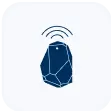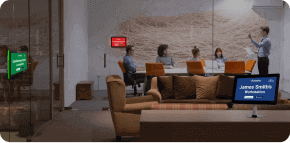Blog

Key Performance Indicators (KPIs) Should You Look for in a hot-desking office
Coworking and shared spaces have not only become popular in recent years. Their norms have also significantly changed as more remote workers and freelancers want their private workspaces.
However, whether these norms translate into a spike or a dip in open coworking memberships depends on the business. A hot desk office business or set-up can remain viable with the right strategies.
Ultimately, these strategies depend on accurate data. This data often comes from key performance indicators (KPIs), which are metrics used to measure specific factors. Viewing them over time enables users to look at the business as a whole and gain valuable insight.
What is Hot Desking and Why is it Becoming More Popular?
Before discussing KPIs, it’s essential to talk about hot desking beforehand.
In a nutshell, hot-desking is a shared seating arrangement. Employees or users take whatever desk is available instead of simply having an assigned space.
By its nature, hot desks promote flexibility and help foster teamwork and innovation for many businesses. Here are the reasons why these types of seating arrangements are becoming more popular:
- Tidier workspaces –Flexible work arrangements are more likely to use hot desks or office hoteling layouts since they make cleaning easier. When employees move around and do not have an assigned space, they can sanitize workstations more frequently. This promotes a cleaner and safer working environment.
- Lowered costs – When employees work outside the office, dedicated desks and workstations remain idle. However, hot desking optimizes existing space and reduces the number of required desks. As a result, businesses can save on real estate costs and office supplies, leading to cost savings.
- Increased collaboration – Hot desk arrangements encourage employees to move around and work in different office areas. This increases the chances of employees talking to colleagues from other departments and collaborating better during projects. Hot desking promotes a more collaborative working environment that can foster innovation and creativity.
What are Key Performance Indicators (KPIs) and How Do You Track Them?
Data and analytics are essential for businesses that want to optimize their current space usage. They are used for measuring and monitoring a company’s overall health and progress in general. However, in the context of a coworking space business, KPIs function a little differently.
Regarding hot desking, KPIs have to be specific to flex spaces. Defining KPIs starts with understanding the business model and the company’s objectives.
Here are a few ways business owners with office hoteling reservation software can track them for long-term success:
1 .Set KPI Targets
To properly track KPI data using existing software, it’s vital to align its settings with the office’s current goals. All resources should be uploaded to ensure accurate inventory.
It’s also essential to analyze the market in the area and set prices to be competitive with other businesses. Additionally, the team should define monthly revenue targets for every custom resource.
2. Analyze Revenue Data
Once targets have been set, it’s time to analyze revenue data. This data is primarily gained from customer KPIs for a hot desking business. These include new members, churned, retained members, and so on.
Business owners can start by looking at the most and least used memberships to determine the average lifespan of each member.
Next, compare the invoiced revenue and upcoming projections for the current and succeeding quarters. Making these comparisons are great for identifying any potential gaps in revenue.
3. Track Turnover
To track turnover, owners of hot desking businesses can compare the difference between new and churned members. In an excellent hot desk or hoteling software, users can usually access a members’ report to see this information.
Comparing these numbers can give valuable insight into which aspects of the business to prioritize. If many members churn monthly, it might be time to collect information to help develop a solid retention program.
What Key Performance Indicators (KPIs) Should You Look for in a Coworking Space?
KPIs are a great way to ensure that a business follows strategic goals and reaches its targets. These measurable and quantifiable metrics are used to track progress to meet specific objectives.
However, these KPIs vary depending on businesses’ needs and goals. The same goes for hot desking companies, which should be set according to specific and achievable goals.
To make any coworking space successful long-term, here are a few KPIs to keep in mind:
1. Recurring Billings
Business owners of coworking spaces need to monitor where their regular income comes from. These sources can come from areas like private offices, meeting rooms, or dedicated desks.
When running a hot desking business, remember that recurring revenue is the core that provides monthly stability. Understanding the breakdown of billings across different members or membership tiers can help adjust operations and offerings.
2. Occupancy/Space Utilization
How well are the spaces being utilized? Tracking occupancy and vacancy is crucial for businesses for a few reasons. For one, it allows owners to follow any changes in preferences and usage over time.
Second, it allows them to adjust their offers and their price range. It also allows them to focus on marketing to specific target demographic segments. Positive and negative trends are easier to follow as a result.
3. Membership Changes
The average member’s lifespan can help business owners evaluate the lifetime value that customers bring.
Changes in membership allow business owners to track different things. These can be new recurring billings, notices, and terminations accessible via quarterly or bi-annual reports.
4. Income Categories
Different types of coworking plans, workstations, or membership plans should be set up as distinct categories. It’s possible to set up product categories to allow users to get the information they need.
An excellent hot desk or hoteling software allows users to set up these categories and group them accordingly. It should be able to display revenue in different categories, complete with its subtotals and reports.
5. Retention Rate
The number of new members is a critical factor impacting revenue via sales. Business owners can develop effective marketing strategies to attract new customers and increase their income.
However, it’s important to remember that retaining existing customers always costs less than acquiring new customers.
Churn rate is also another important KPI to consider along with retention. Since coworking spaces work best with long-term use and member subscriptions, it shouldn’t be a revolving door for customers.
6. Customer Satisfaction
Customer feedback and satisfaction should be more utilized factors that more businesses should consider. The same is true for a hot desk business.
Business owners and managers should encourage customers to submit their feedback through surveys. Doing so can help improve customer experience by optimizing space layout, amenities, and overall ambiance.
How to Choose the Right Desk Booking Software for Your Hot Desk Business
Desk booking software is an essential tool for any coworking space business. With coworking spaces increasing in popularity comes an overall increase in demand. This type of software not only helps business owners meet said demand but also ensures customer satisfaction.
These types of software often come with essential features like single sign-on or data analytics. They help automate various processes that would be tedious when done manually. Additionally, they are less prone to error.
However, it’s not enough to simply look at the base features. There are other factors to consider when choosing a hot desking software, such as:
Tip #1: Find the Balance Between Needs and Ease of Use
Different software solutions can range from basic to complex needs, complete with supporting features. Only some features may be required. Considering the company’s needs and requirements is the first step to finding the best software suited to the job. It should be easy enough to use while still having the right features neede
Tip #2: Consider App and Hardware Integrations
Reservation software solutions for hot desks aren’t complete without integrations for third-party apps and hardware.
Today, using tools like Microsoft Outlook, Google Calendar, or Slack is worth it. With third-party app integrations, users don’t need to familiarize new tools. Instead, they can simply make the booking using the tools they’re most familiar with.
Hardware integration is also a feature worth investing in. Meeting room displays can show reservation schedules and occupancy status. Meanwhile, on-desk devices allow users to check in or out.
Tip #3: Evaluate Check-in Options
Hot desking, office hoteling, and other flexible workspace arrangements encounter downsides like no-shows. Double bookings can also cause potential issues and scheduling conflicts.
However, desk reservation software can minimize or prevent these issues. They offer many check-in options for users or employees. These options range from scanning QR codes to clicking buttons on a dedicated app.
The Bottom Line
The success of today’s hot desk office businesses depends on accurate data from key performance indicators. KPIs like membership changes, recurring billings, and customer satisfaction help determine whether the company is meeting its goals.
To gain this data, desk booking software is an essential tool. This type of software helps business owners meet and exceed customer expectations and ensures long-term growth.
If you’re still curious about which software to choose, look no further. Book a demo with us today – we’d love to hear from you!















































 Support
Support  Demo
Demo  Blog
Blog